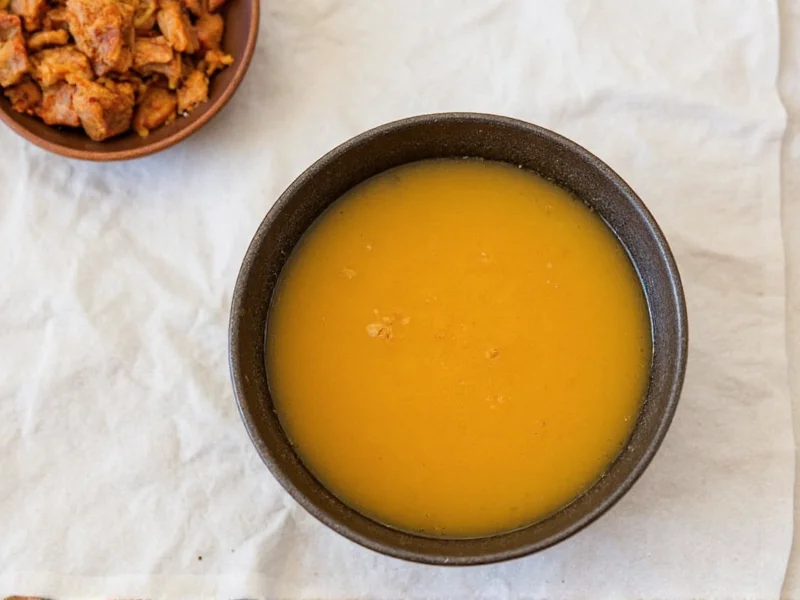Creating authentic miso soup with miso paste requires understanding the delicate balance between traditional technique and accessible ingredients. This fermented soybean paste brings umami depth and probiotic benefits to your bowl, but improper handling can ruin both flavor and nutritional value. Unlike many online recipes that oversimplify the process, mastering how to make miso soup with miso paste properly involves specific temperature control and ingredient sequencing that preserves the paste's living cultures.
Essential Ingredients for Authentic Miso Soup
The quality of your miso soup depends heavily on selecting the right miso paste. Japanese miso comes in three primary varieties, each suited for different applications:
| Miso Type | Flavor Profile | Best For | Recommended Amount |
|---|---|---|---|
| White Miso (Shiro) | Sweet, mild, slightly tangy | Delicate soups, dressings | 3 tbsp per 4 cups broth |
| Red Miso (Aka) | Strong, salty, complex | Hearty winter soups | 2 tbsp per 4 cups broth |
| Mixed Miso (Awase) | Balanced umami | All-purpose cooking | |
| 2.5 tbsp per 4 cups broth |
For beginners learning how to make miso soup with miso paste, white or mixed miso provides the most forgiving flavor profile. Always purchase unpasteurized miso stored in refrigerated sections to ensure live cultures. The proper way to use miso paste in soup requires avoiding temperatures above 160°F (71°C), which destroys beneficial enzymes.
Traditional Equipment Requirements
While you don't need specialized Japanese kitchen tools, these items ensure success when preparing miso soup recipe for beginners:
- Wooden soup paddle (prevents metal from reacting with miso)
- Fine-mesh strainer (for clear dashi broth)
- Small whisk (essential for smooth miso incorporation)
- Medium saucepan (with heavy bottom for even heating)
Step-by-Step Miso Soup Preparation
- Prepare dashi broth: Simmer 4 cups water with 1 dried kombu (4x6 inch piece) for 20 minutes at 175°F (80°C). Remove kombu before boiling.
- Add bonito flakes (optional): Turn off heat, add 1/2 cup bonito flakes, steep 5 minutes, then strain.
- Cool broth slightly: Let dashi cool to 160°F (71°C) - crucial step in the miso soup preparation technique.
- Dissolve miso paste: Ladle 1 cup warm broth into separate bowl, add miso paste, and whisk until smooth.
- Combine: Return miso mixture to main pot, gently stir without boiling.
- Add ingredients: Incorporate cubed tofu, sliced green onions, and wakame seaweed.
Why Temperature Control Matters
The proper way to use miso paste in soup centers on temperature management. Boiling miso:
- Destroys up to 90% of beneficial lactic acid bacteria
- Causes unpleasant bitterness from caramelized sugars
- Creates separation where oil rises to the surface
- Diminishes the complex umami flavors developed during fermentation
Professional chefs measure broth temperature with instant-read thermometers, but home cooks can use the steam test: when steam becomes visible but no bubbles form (approximately 160°F), the broth is ready for miso incorporation.
Popular Variations and Customizations
Once you've mastered the simple miso soup with miso paste base recipe, try these authentic variations:
- Spring Vegetable Miso: Add fresh asparagus tips and snap peas in the last 2 minutes
- Seafood Miso: Stir in cooked clams or shrimp just before serving
- Spicy Miso: Mix in 1 tsp chili paste (rayu) with the miso
- Vegan Miso: Use shiitake mushroom dashi instead of bonito
Troubleshooting Common Mistakes
Even experienced cooks make these errors when learning how to make miso soup with miso paste:
| Problem | Causes | Solution |
|---|---|---|
| Cloudy broth | Boiling kombu, improper straining | Simmer kombu below boiling point, double-strain dashi |
| Bitter taste | Overheated miso, too much red miso | Check temperature, balance with white miso |
| Separation | Boiled miso, improper dissolving | Always dissolve miso in warm broth first |
Serving and Storage Guidelines
Serve miso soup immediately in pre-warmed bowls to maintain proper temperature. The best miso paste for homemade soup will continue fermenting, so consume within 24 hours for optimal flavor. For storage:
- Refrigerate without additional ingredients for up to 3 days
- Freeze miso-only broth for up to 2 months (add fresh ingredients when reheating)
- Never reboil stored miso soup - gently warm to 160°F maximum
Pair your traditional miso soup method creation with steamed rice and grilled fish for an authentic Japanese meal. The probiotic-rich soup aids digestion while complementing heavier dishes with its light umami profile.
Frequently Asked Questions
Can I use water instead of dashi broth for miso soup?
Yes, but the flavor will be significantly less authentic. For acceptable results when making miso soup recipe for beginners, add 1 dried shiitake mushroom per 4 cups water while heating. Remove before adding miso. Dashi provides the essential umami foundation that balances miso's saltiness.
How do I prevent miso from clumping when adding to broth?
The professional miso soup preparation technique requires dissolving miso in a small amount of warm broth first. Use a ladle to remove 1 cup of heated dashi, cool slightly, then whisk miso paste into this portion until completely smooth before returning to the main pot. Never add dry miso directly to hot broth.
What's the difference between miso paste and miso powder?
Miso paste contains live cultures and complex fermented flavors, while miso powder is dehydrated and often contains additives. For authentic how to make miso soup with miso paste results, always use refrigerated miso paste. Powder lacks the depth of flavor and probiotic benefits, though it has longer shelf life. Reconstituted powder won't replicate true miso soup's texture.
Can I make miso soup without bonito for vegetarian version?
Absolutely. Create vegetarian dashi using 4 cups water with 1 dried kombu and 10 dried shiitake mushrooms simmered for 25 minutes at 175°F. Remove ingredients before adding miso. This vegan miso soup variation maintains authentic flavor while being plant-based. Some traditional Japanese temples have used this method for centuries.











 浙公网安备
33010002000092号
浙公网安备
33010002000092号 浙B2-20120091-4
浙B2-20120091-4